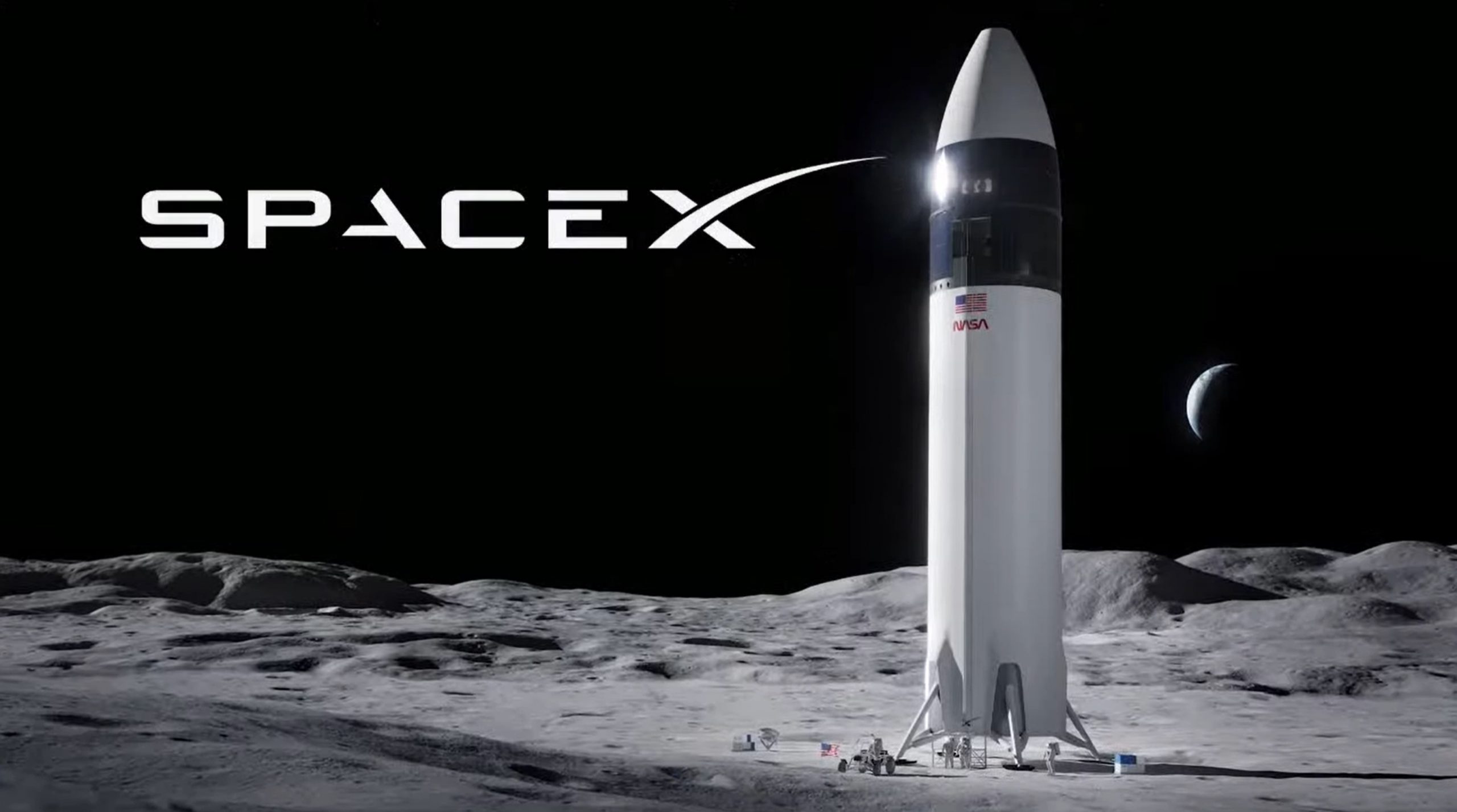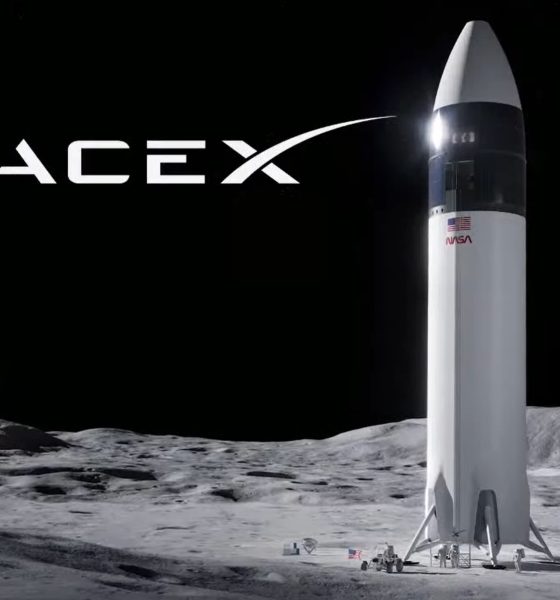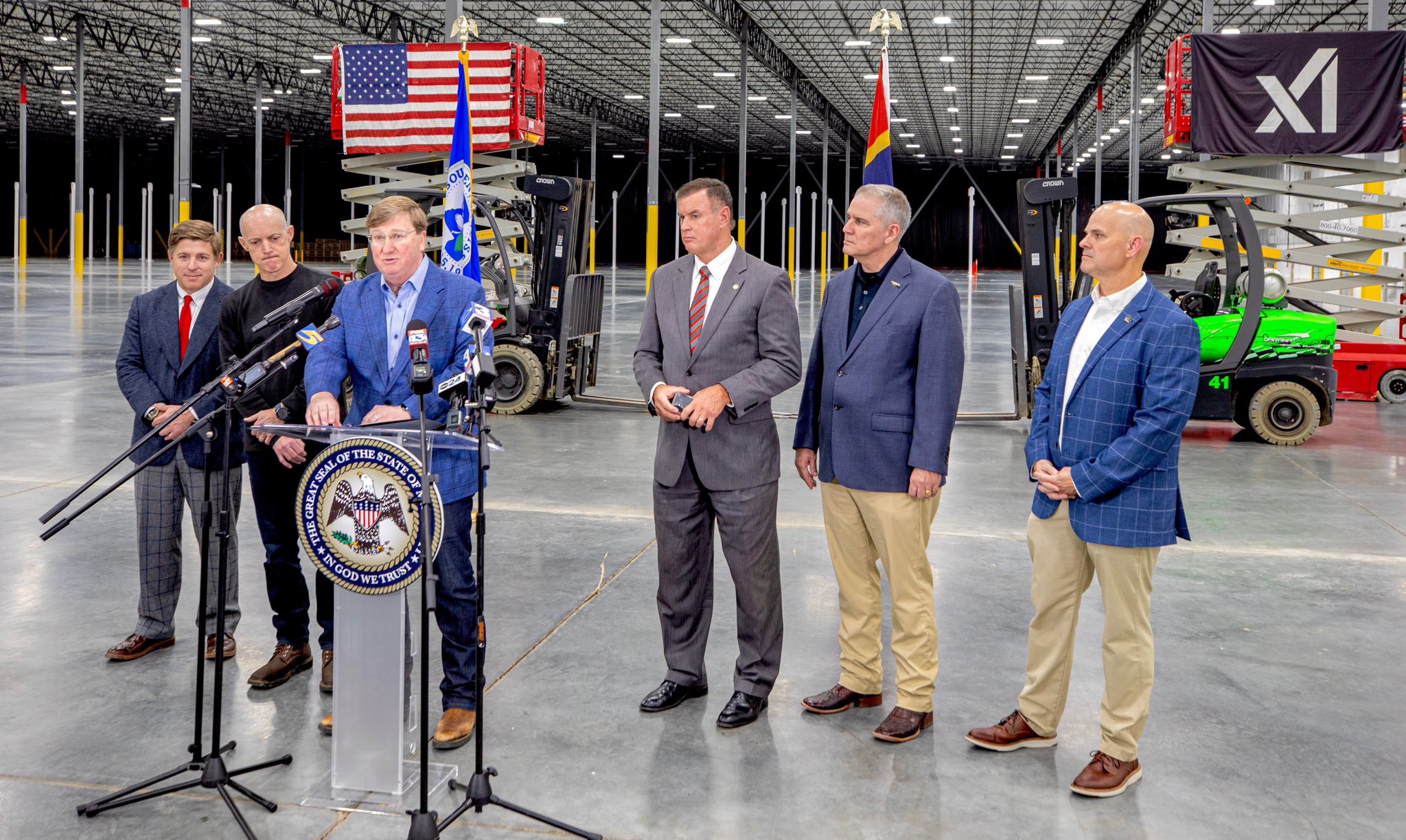

News
SpaceX’s Starship to return humanity to the Moon in stunning NASA decision
In one of the biggest NASA contracting surprises in years, the space agency has chosen SpaceX – and only SpaceX – to return humans to the surface of the Moon with its next-generation Starship rocket.
The Washington Post’s Christian Davenport broke the news a few hours before NASA’s scheduled announcement and teleconference, revealing that SpaceX beat out Dynetics and a Blue Origin-led “National Team” for a sole-source contract to build, launch, and land a custom version of Starship on the Moon for $2.89 billion. If that uncrewed testing is successful, SpaceX and Starship will be tasked with landing the first astronauts on the Moon in half a century as early as the in the mid-2020s.
While a Human Landing System (HLS) announcement was fully planned and expected to happen this month, virtually everyone following the process believed that NASA would continue to lean on the rationale behind selecting multiple providers for its Commercial Resupply Services (CRS) and Commercial Crew (CCP) programs. Having multiple distinct providers, spacecraft, and rockets available to accomplish the same tasks fundamentally insulates NASA (and the International Space Station that depends on those programs) from losing the ability to transport crew or cargo in the event that any one provider is delayed or suffers a major failure.
With a goal as complex as landing humans back on the Moon for the first time since the 1970s, redundancy and multiple distinct solutions would obviously be even more desirable. Entirely contrary to expectations, NASA instead announced that it had exclusively contracted with SpaceX alone for next phase of HLS development. Though SpaceX may have been the only competitor already testing something approximating real integrated flight hardware, NASA’s decision to sole-source HLS to Starship represents a significant gamble.
Simultaneously, though, the move is also extraordinarily pragmatic and indicates that one or several major decisionmakers at NASA have taken less positive lessons from its commercial cargo and crew programs to heart. Crucially, over the first several years of the Commercial Crew Program (CCP), Congress systematically underfunded the development of two commercial crew spacecraft – one from Boeing and the other from SpaceX. As a direct result, the launch debuts of both spacecraft were delayed by several years, forcing NASA to to continue relying on Russian Soyuz launches well into the 2020s to get its astronauts to the ISS.
Additionally, SpaceX – an unequivocal underdog and newbie next to Boeing in the mid-2010s – has drastically outperformed its traditional aerospace counterpart, beating Boeing to the punch and launching astronauts first. Boeing’s Starliner is now at least 18 months behind Crew Dragon despite costing almost 60% more.
In its first year on the books, almost mirroring NASA’s Commercial Crew experience, Congress aggressively underfunded the HLS program, allotting $850M – just 25% – of the $3.4B NASA requested. In other words, NASA seems to be proceeding with HLS under the assumption that Congress – as it did with CCP – will continue to chronically underfund the lunar lander program for years to come. If that’s the case, NASA appears to have made an uncharacteristically astute decision to structure HLS not on its preferred budget – but on what the agency believes Congress will pony up.
Put in a slightly different way, NASA is basically telling Congress that its lack of commitment has forced the agency to sole-source its lunar lander contract to SpaceX, putting the impetus on Congress to properly fund the HLS program if it wants redundant providers. All told, while NASA is undoubtedly taking a risk selecting SpaceX and Starship to return both it and humanity to the Moon, the space agency has now made it abundantly clear that it’s fully committed to the program and goal, whether or not Congress is willing to do its job.

News
Tesla Model Y Standard Long Range RWD launches in Europe
The update was announced by Tesla Europe & Middle East in a post on its official social media account on X.

Tesla has expanded the Model Y lineup in Europe with the introduction of the Standard Long Range RWD variant, which offers an impressive 657 km of WLTP range.
The update was announced by Tesla Europe & Middle East in a post on its official social media account on X.
Model Y Standard Long Range RWD Details
Tesla Europe & Middle East highlighted some of the Model Y Standard Long Range RWD’s most notable specs, from its 657 km of WLTP range to its 2,118 liters of cargo volume. More importantly, Tesla also noted that the newly released variant only consumes 12.7 kWh per 100 km, making it the most efficient Model Y to date.
The Model Y Standard provides a lower entry point for consumers who wish to enter the Tesla ecosystem at the lowest possible price. While the Model 3 Standard is still more affordable, some consumers might prefer the Model Y Standard due to its larger size and crossover form factor. The fact that the Model Y Standard is equipped with Tesla’s AI4 computer also makes it ready for FSD’s eventual rollout to the region.
Top Gear’s Model Y Standard review
Top Gear‘s recent review of the Tesla Model Y Standard highlighted some of the vehicle’s most notable features, such as its impressive real-world range, stellar infotainment system, and spacious interior. As per the publication, the Model Y Standard still retains a lot of what makes Tesla’s vehicles well-rounded, even if it’s been equipped with a simplified interior.
Top Gear compared the Model Y Standard to its rivals in the same segment. “The introduction of the Standard trim brings the Model Y in line with the entry price of most of its closest competition. In fact, it’s actually cheaper than a Peugeot e-3008 and costs £5k less than an entry-level Audi Q4 e-tron. It also makes the Ford Mustang Mach-E look a little short with its higher entry price and worse range,” the publication wrote.
Elon Musk
Elon Musk’s xAI bets $20B on Mississippi with 2GW AI data center project
The project is expected to create hundreds of permanent jobs, dramatically expand xAI’s computing capacity, and further cement the Mid-South as a growing hub for AI infrastructure.

Elon Musk’s xAI plans to pour more than $20 billion into a massive new data center campus in Southaven, Mississippi, marking the largest single economic development project in the state’s history.
The project is expected to create hundreds of permanent jobs, dramatically expand xAI’s computing capacity, and further cement the Mid-South as a growing hub for AI infrastructure.
xAI goes MACROHARDRR in Mississippi
xAI has acquired and is retrofitting an existing facility in Southaven to serve as a new data center, which will be known as “MACROHARDRR.” The site sits near a recently acquired power plant and close to one of xAI’s existing data centers in Tennessee, creating a regional cluster designed to support large-scale AI training and inference.
Once completed, the Southaven facility is expected to push the company’s total computing capacity to nearly 2 GW, placing it among the most powerful AI compute installations globally. The data center is scheduled to begin operations in February 2026.
Gov. Tate Reeves shared his optimism about the project in a press release. “This record-shattering $20 billion investment is an amazing start to what is sure to be another incredible year for economic development in Mississippi. Today, Elon Musk is bringing xAI to DeSoto County, a project that will transform the region and bring amazing opportunities to its residents for generations. This is the largest economic development project in Mississippi’s history,” he said.
xAI’s broader AI ambitions
To secure the investment, the Mississippi Development Authority approved xAI for its Data Center Incentive program, which provides sales and use tax exemptions on eligible computing hardware and software. The City of Southaven and DeSoto County are also supporting the project through fee-in-lieu agreements aimed at accelerating development timelines and reducing upfront costs.
Founded in 2023 by Elon Musk, xAI develops advanced artificial intelligence systems focused on large-scale reasoning and generative applications. Its flagship product, Grok, is integrated with the social media platform X, alongside a growing suite of APIs for image generation, voice, and autonomous agents, including offerings tailored for government use.
Elon Musk highlighted xAi’s growth and momentum in a comment about the matter. “xAI is scaling at an immeasurable pace — we are building our third massive data center in the greater Memphis area. MACROHARDRR pushes our Colossus training compute to ~2GW – by far the most powerful AI system on Earth. This is insane execution speed by xAI and the state of Mississippi. We are grateful to Governor Reeves for his support of building xAI at warp speed,” Musk said.
Elon Musk
Tesla AI Head says future FSD feature has already partially shipped

Tesla’s Head of AI, Ashok Elluswamy, says that something that was expected with version 14.3 of the company’s Full Self-Driving platform has already partially shipped with the current build of version 14.2.
Tesla and CEO Elon Musk have teased on several occasions that reasoning will be a big piece of future Full Self-Driving builds, helping bring forth the “sentient” narrative that the company has pushed for these more advanced FSD versions.
Back in October on the Q3 Earnings Call, Musk said:
“With reasoning, it’s literally going to think about which parking spot to pick. It’ll drop you off at the entrance of the store, then go find a parking spot. It’s going to spot empty spots much better than a human. It’s going to use reasoning to solve things.”
Musk said in the same month:
“By v14.3, your car will feel like it is sentient.”
Amazingly, Tesla Full Self-Driving v14.2.2.2, which is the most recent iteration released, is very close to this sentient feeling. However, there are more things that need to be improved, and logic appears to be in the future plans to help with decision-making in general, alongside other refinements and features.
On Thursday evening, Elluswamy revealed that some of the reasoning features have already been rolled out, confirming that it has been added to navigation route changes during construction, as well as with parking options.
He added that “more and more reasoning will ship in Q1.”
🚨 Tesla’s Ashok Elluswamy reveals Nav decisions when encountering construction and parking options contain “some elements of reasoning”
More uses of reasoning will be shipped later this quarter, a big tidbit of info as we wait v14.3 https://t.co/jty8llgsKM
— TESLARATI (@Teslarati) January 9, 2026
Interestingly, parking improvements were hinted at being added in the initial rollout of v14.2 several months ago. These had not rolled out to vehicles quite yet, as they were listed under the future improvements portion of the release notes, but it appears things have already started to make their way to cars in a limited fashion.
Tesla Full Self-Driving v14.2 – Full Review, the Good and the Bad
As reasoning is more involved in more of the Full Self-Driving suite, it is likely we will see cars make better decisions in terms of routing and navigation, which is a big complaint of many owners (including me).
Additionally, the operation as a whole should be smoother and more comfortable to owners, which is hard to believe considering how good it is already. Nevertheless, there are absolutely improvements that need to be made before Tesla can introduce completely unsupervised FSD.








